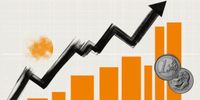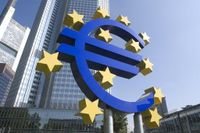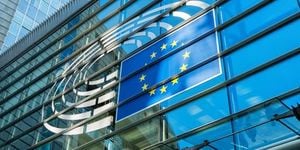The EUR/USD currency pair is gaining traction around 1.1370 during the early Asian session on Friday, April 18, 2025, as traders react to the latest monetary policy changes from the European Central Bank (ECB) and ongoing concerns regarding U.S. tariffs. This movement comes on the heels of the ECB's decision to cut interest rates for the third time this year, bringing the main interest rate down to 2.25%. The cut is part of a broader strategy to counteract slowing economic growth in the Eurozone, which has been significantly impacted by U.S. trade policies under former President Donald Trump.
On Thursday, April 17, 2025, the ECB announced a 25-basis point reduction to its interest rates, marking the seventh consecutive cut by the institution. ECB President Christine Lagarde highlighted the adverse effects of U.S. tariffs on EU goods, which have surged from an average of 3% to 13%. She stated, "The economic outlook is clouded by exceptional uncertainty." Lagarde emphasized the need for the ECB to remain agile in response to the evolving economic landscape, noting, "We have to stand ready for the unpredictable." This dovish stance indicates that further rate cuts could be on the horizon if economic conditions do not improve.
The decision to lower rates was influenced by a comprehensive assessment of inflation prospects and the dynamics of underlying inflation, as well as the strength of monetary policy transmission. Analysts expect that if trade tensions persist, additional cuts could occur as early as June. The ECB is closely monitoring inflation data, which has shown signs of stabilizing towards the medium-term target of 2%. However, the risks associated with the ongoing global economic uncertainty, particularly due to Trump's tariffs, have raised concerns about the Eurozone's growth outlook.
As the ECB implements these changes, the U.S. Federal Reserve (Fed) is also navigating a complex economic environment. Fed Chair Jerome Powell recently warned that the tariffs could lead to a challenging scenario for the U.S. central bank, potentially creating a stagflationary environment. His comments have influenced market sentiment, reducing the likelihood of a Fed rate reduction in June. Money market traders are currently pricing in nearly 86 basis points of Fed rate cuts by the end of 2025, with the first anticipated cut expected in July.
The EUR/USD pair, as the most heavily traded currency pair in the world, accounts for around 30% of all foreign exchange transactions. In 2022, the Euro represented 31% of all transactions, with an average daily turnover exceeding $2.2 trillion. The dynamics of the Eurozone economy are particularly significant, as it encompasses 19 countries that share the Euro as their currency. The ECB, headquartered in Frankfurt, Germany, plays a crucial role in setting monetary policy and managing interest rates across the Eurozone.
Economic indicators, such as GDP growth, employment data, and consumer sentiment surveys, heavily influence the Euro's value. A strong economy typically attracts foreign investment, which can lead to higher interest rates and a stronger currency. Conversely, weak economic data can lead to a depreciation of the Euro. The ECB's primary mandate is to maintain price stability, and its decisions are closely watched by global investors.
In addition to interest rate changes, the ECB's monetary policy decisions are influenced by data releases that gauge the health of the economy. The four largest economies in the Eurozone—Germany, France, Italy, and Spain—account for a substantial portion of the Eurozone's economic activity, making their performance particularly impactful on the Euro's value. The Trade Balance is another critical indicator, measuring the difference between exports and imports. A positive Trade Balance strengthens the Euro, while a negative balance can lead to currency depreciation.
As traders react to these developments, the market remains focused on the potential implications of U.S. trade policies and the ECB's response to evolving economic conditions. The interplay between U.S. tariffs and Eurozone monetary policy will continue to shape the outlook for both the Euro and the U.S. Dollar in the coming months.
In light of these dynamics, the ongoing developments in U.S.-EU trade relations will be closely monitored by market participants. The impact of tariffs on economic growth and inflation will remain a central theme as both central banks navigate a landscape filled with uncertainty. As the situation evolves, traders will need to stay informed about the latest economic data and policy announcements to make well-informed decisions in the foreign exchange market.
Overall, the current economic climate presents a complex array of challenges and opportunities for investors and policymakers alike. The actions taken by the ECB and the Fed in response to these challenges will have lasting implications for the global economy and the foreign exchange markets.






